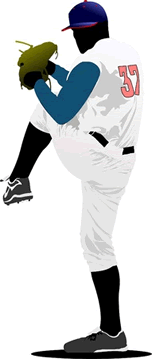What is a Deep Groin Disruption and How is it Treated?
 A broken leg is just a leg that has been broken. A bruised rib: just a bruised rib. But with a sports hernia, it’s never that simple. A sports hernia is a deep tissue injury to the muscles in the groin area. Along with the initial tear, it can cause problems with the surrounding area and its ligaments and tendons. So a sports hernia? Not just a sports hernia.
A broken leg is just a leg that has been broken. A bruised rib: just a bruised rib. But with a sports hernia, it’s never that simple. A sports hernia is a deep tissue injury to the muscles in the groin area. Along with the initial tear, it can cause problems with the surrounding area and its ligaments and tendons. So a sports hernia? Not just a sports hernia.
It’s crucial to know that when you go in for your sports hernia appointment, it is also necessary to get your entire groin area checked out. When a sports hernia occurs, it is typically diagnosed from a tear in the inguinal ligament, but can include many other issues as well. In most cases, the whole region is vulnerable and could have been affected.
An experienced sports hernia surgeon will examine the surrounding muscles and connecting tissue to determine if there are any additional injuries. One of the most common is deep groin disruption, a general term for problems affecting the innermost groin muscles, tendons, and nerves. While these injuries may not be as noticeable on first sight, they can negatively influence your ability to perform in your sport.
Two of the frequent deep groin disruption injuries are those to the transversalis muscle and the conjoint tendon. Not only are these essential to proper function and range of motion, but if they go unrepaired, can continue to cause problems over a lifetime. During the surgery to repair the sports hernia itself, Dr. Brown will also repair any issues with the transversalis and conjoint tendon. If necessary, repairs will also be made to the adductor tendon and the oblique muscles, additional areas that are commonly affected.
Sports hernias can not only wreak havoc on the groin muscles, but also can damage the surrounding nerves and other tissues as well. One major component of the groin area in men is the spermatic cord, a crucial connector that is often right in the way of a sports hernia, thus absorbing quite a bit of damage. While repairing the sports hernia, Dr. Brown also checks the spermatic cord and, if necessary, restores it to the correct condition and location. The ilioinguinal nerve is yet another possible victim of a sports hernia injury, but the same repair procedure is followed to ensure its full function.
Sports hernia injuries can turn out to be much more than just an easy-repair tear. They can involve and damage the surrounding muscles, tendons, nerves, and more. When considering your options for repair surgery, it’s crucial to consult with a sports hernia specialist that has lots of experience – not only repairing sports hernias, but also the deep groin disruption that possibly comes with it.
